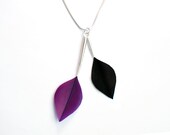
delaying the stall and/or enhancing the lift, remains unclear. However, different bird species seem to have alulae of different sizes, and how the variation of the alula size is connected to its function, i.e.

Alula feather generator#
This hypothesis does not exclude the aerodynamic function of the alula and does not predict any relationship between alula size and wing or body size.Īccording to the two-dimensional aerofoil theory that has been applied to explaining aerodynamic phenomena around bird wings (Alexander 2002 Videler 2005), only those characteristics that determine the cross section of the wing are important and thus the effect of the alula as the vortex generator does not necessarily depend on the shape of the wings. Another possible function of the alula, which has been less explored, is that the alula can detect the onset of stall and thus function as an airflow sensor (Brown & Fedde 1993). 2015), and our previous study suggests that the function of the alula is primarily for lift enhancement due to a small streamwise vortex formed at the tip of the alula (Lee et al. However, the stall delaying effect has not been convincingly shown across bird species (Austin & Anderson 2007 Lee et al. Based on the stall delaying effect of the alula, it is thought that the function of the alula is comparable to that of the leading-edge slat in aeroplanes (Álvarez et al. 2015) and assumed to delay the stall angle (Nachtigall & Kempf 1971 Meseguer et al.

2015), the alula has been known to increase lift in high attack angle conditions (Nachtigall & Kempf 1971 Meseguer et al. In spite of its small size (corresponds to 5–10% of the wing length Lee et al. Among the various characteristics of the wing that enable efficient flights, the alula, a small group of feathers that are attached to the leading edge of the wing, is known to enhance lift. Bird wings are complex devices that are highly specialized in generating forces necessary for flight. In order to understand the mechanics of bird flight, it is essential to understand the structure that is responsible for flight: wings. Alexander 2002 Videler 2005 Lentink et al. Our results suggest that the size and shape of the alula can be explained in one allometric landscape defined by wing length and loading in these two closely related families of birds with similar wing shapes.īird flight has fascinated many researchers throughout many centuries, and the mechanics and kinematics of bird flight have been well described and experimentally studied (e.g. We hypothesize that heavier species may benefit from having longer alula if they perform flights with higher attack angles than lighter species, as longer alula would better suppress flow separation at higher attack angles. Combined, these results suggest that the species with high loading potential and long wings exhibit long alula. The aspect ratio of the alula was greater in the species that are relatively heavier in the Sternidae but not in the Laridae.

In the Laridae, the aspect ratio of the alula was smaller in the species that have relatively longer wings, but the pattern was opposite in the Sternidae. The two families differed in the relationships between body size or wing length and the size or shape of the alula.

Laridae birds have generally longer wings and greater loadings than Sternidae birds. In this study, we investigated the relationship between the size and shape of the alula and the features of the wing in the Laridae and Sternidae. Alula size vary among birds, but how this variation is associated with the function of the alula remains unclear. The alula is a small structure present on the leading edge of bird wings and is known to enhance lift by creating a small vortex at its tip.


 0 kommentar(er)
0 kommentar(er)
